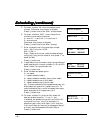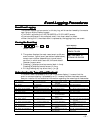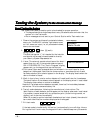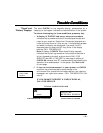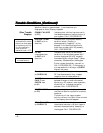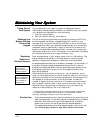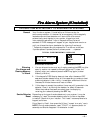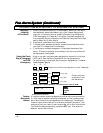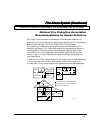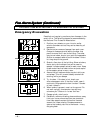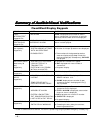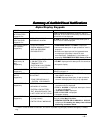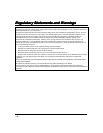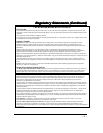
– 44 –
Fire Alarm System (Continued)
Fire Alarm System (Continued)Fire Alarm System (Continued)
Fire Alarm System (Continued)
THIS SECTION APPLIES ONLY TO RESIDENTIAL SYSTEMS
Manually
Initiating
a Fire Alarm
1. Should you become aware of a fire emergency before your smoke or
heat detectors sense the problem, go to your nearest keypad and
manually initiate an alarm by pressing the panic key assigned for
FIRE emergency for 2 seconds. If a key pair has been assigned for
fire, press both keys at the same time. See the Using the Panic Keys
section below for further details.
2. Evacuate all occupants from the premises.
3. If flames and/or smoke are present, leave the premises and notify
your local Fire Department immediately.
4. If no flames or smoke are apparent, investigate the cause of the
alarm. The zone number(s) of the zone(s) in an alarm condition will
be displayed at the keypad.
Using the Panic
Key(s) Assigned
for FIRE
Emergency
A key or key pair may have been assigned for manually initiating a
FIRE alarm. See the Panic Keys section for key assignments.
For convenience, indicate the key or key pair assigned for fire below.
Individual Keys
A B C
Press
the individual key assigned for fire for 2 seconds.
OR Key Pairs
1 OFF
and ∗ READY (zone 95)
∗ READY
and
# (zone 99)
3 STAY and
# (zone 96)
DISPLAYS FOLLOWING MANUAL INITIATION OF A FIRE ALARM
FIRE 95
95
9595
95
ALARM
F
IRE
AC
ALPHA DISPLAY KEYPAD
FIXED-WORD KEYPAD
Carbon
Monoxide
Alarms
If installed, carbon monoxide detectors provide continuous protection.
If a high level of carbon monoxide is detected, an interrupted pulsed
alarm sound occurs at the keypads and the detector(s). Immediately
move to a spot where fresh air is available, preferably outdoors. From
a safe area, call your security service provider for further instructions.
To silence the keypad sounding, press the OFF key. To silence the
detector, see its instructions.
Press the key pair
assigned for fire at
t
he same time.



